Scroll down for more
Efficient Fulfillment: A Key Component of E-commerce Customer Experience
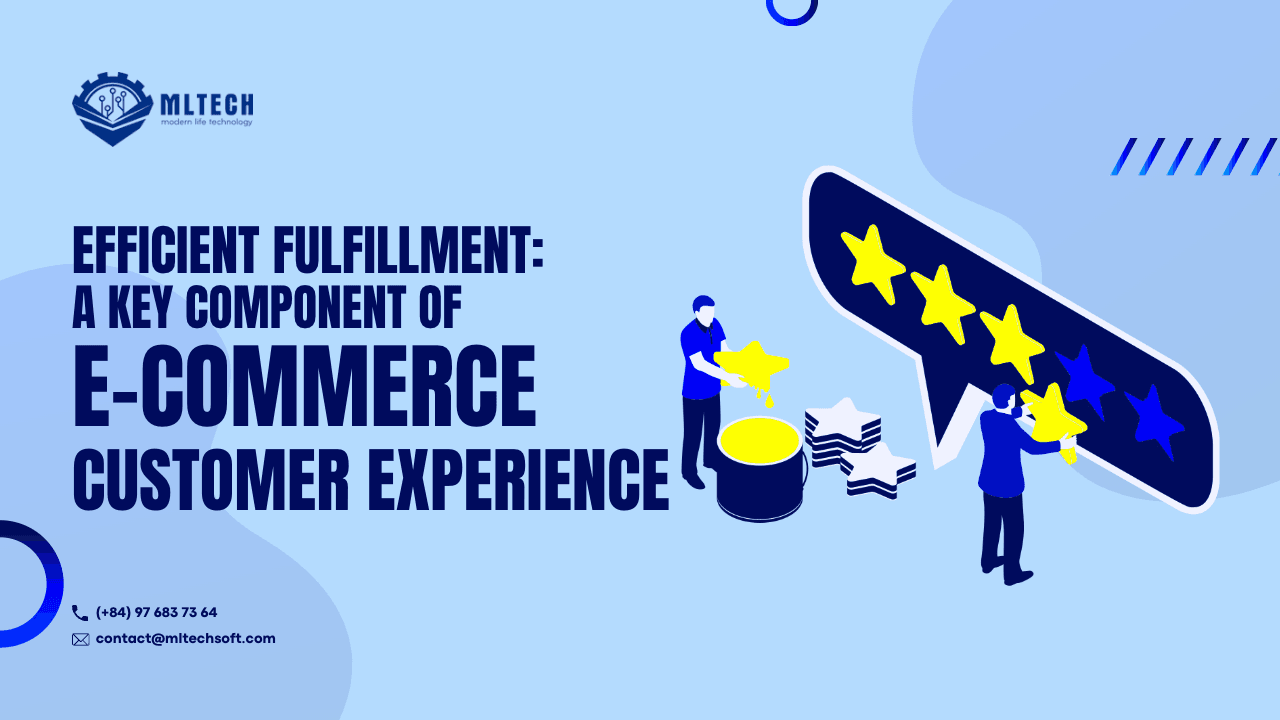
Along with modern technology, e-commerce has become an integral part of the retail industry thanks to its several typical features. One of the things that e-commerce does better than traditional retail is meet customers’ needs effectively, which is considered a key component to improving brand retail.
This article will go over the fulfillment element in e-commerce for all retail businesses to understand and apply in their operations to improve productivity and branding.
Understand the Customer's Expectations
The most important thing in selling high-quality products in high volume depends on how retail businesses understand customers’ expectations. Through this step, they can improve customer satisfaction, competitiveness with competitors, or trust and credibility.
Customer expectations for efficient and timely order delivery
For an e-commerce platform, customers always receive their shipment as soon as possible; therefore, retailers should ensure efficient and timely order delivery.
Customers usually expect the following when they first place an order:
Fast delivery: Customers want to receive their orders quickly, so even paying extra money for expedited delivery options, such as same-day or next-day delivery, they are ready to do.
Precise tracking: They want to know the order’s status so that they can make an alternative and process delivery to make a plan.
Reliable delivery: Customers also hope their parcel is shipped to the correct address without damage during transit.
Return policy: Shoppers also want to clarify the return process with clear instructions and a straightforward procedure for these products that don't meet their satisfaction.
By processing the delivery quickly, retailers are accumulating points in customers' eyes by enhancing their buying experiences.
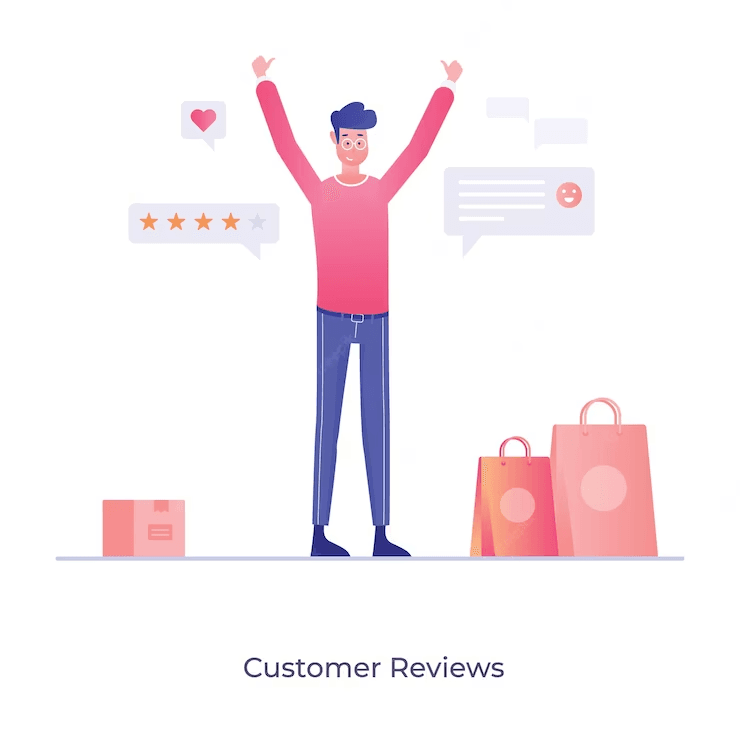
How customers judge online retailers based on the delivery experience
Customers can judge online retailers based on the delivery experience in terms of:
Speed of delivery: Customers expect fast and efficient delivery of their orders and will evaluate online retailers based on how quickly their orders are delivered. The more quickly the delivery is, the more positive feedback customers give.
Accuracy of delivery: Customers expect their orders to be delivered accurately, to the correct address, and with the right items. Some errors with orders, such as shipping to the wrong address or sending the incorrect items, customers can rate the lowest-star plus negative opinions.
Package of delivery: Customers expect their orders to be well-packaged with attention paid to protecting fragile items during transit. The more careful orders retailers are, the more customers appreciate them and rate the high mark in feedback.
Return Process: The obvious, easy instruction about the return policy also marks a point in the customers’ eyes. Sometimes, the returns may result from the retailers with the wrong order or don't meet their expectations, so they want to process this return as soon as possible to save time.
Communication: Customers always value online retailers who're always online and respond to all questions during the buying process quickly rather than those who ignore their questions.
We cannot deny that the delivery experience is a vital element in the way customers judge online retailers. By focusing on speed, accuracy, communication, packaging, and return policies, retailers can build a positive customer experience.
Optimize the Order Fulfillment Process
Understanding the customer's expectations and the way they judge based on the delivery experience, retailers must concentrate on making a strategy to optimize the order fulfillment process to gain a positive review on their selling platform.
Overview of the order fulfillment process
The order fulfillment process is a series of steps that starts with receiving, processing, and delivering customer orders at the end. It is a crucial aspect of any business that sells products or services, as it influences customer satisfaction and business success later.
Here are the full steps of the order fulfillment process:
Order placement: The customer places an order through a website, phone, or in person.
Order processing: The business receives the order and continues processing by verifying payment, confirming the availability of products, and calculating shipping and taxes as needed.
Order picking: Retailers pick products from their warehouse based on the order detailers.
Order packing: Retail staff pack the products in a box or container, along with packing materials such as bubble wrap, packing peanuts, or air pillows to protect the product better.
Order labeling: Retail staff will print and affix the shipping label and any required documentation, such as customs forms if shipping to other countries.
Order shipping: The shipper will come and pick up the package from the retailer to the carrier or shipping provider for delivery to the customer.
Order tracking: Each order has a separate tracking number that allows customers to monitor the progress of their order and estimated delivery date.
Order delivery: The shipper delivers the package to the customer's address.
Order confirmation: The customer confirms receipt of the order, and the order fulfillment process is complete.
Multiple departments and stakeholders are involved in the order fulfillment procedure, including sales, customer support, warehouse, shipping, and logistics. Their teamwork and the technologies used will determine the process's efficiency and precision.
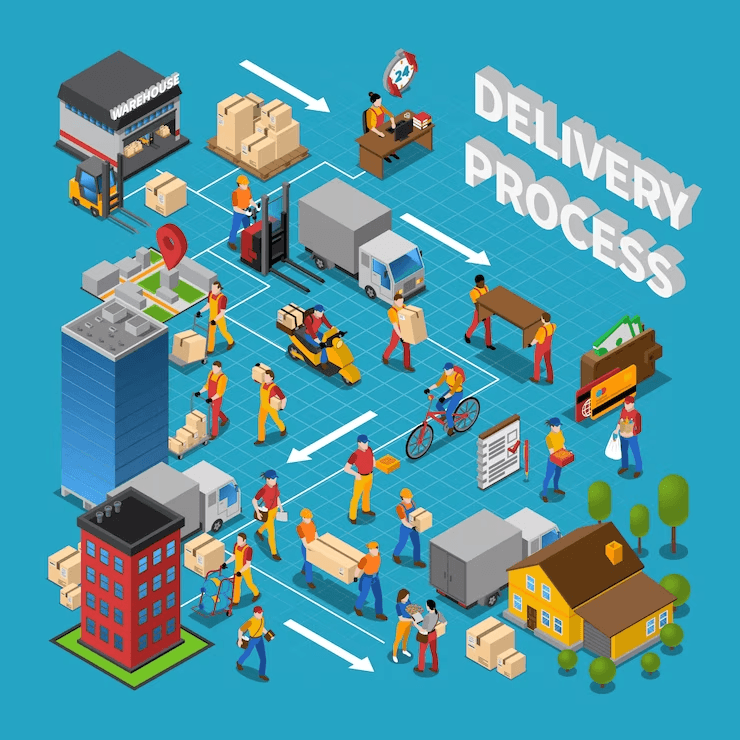
Identify bottlenecks and areas for improvement
The order fulfillment procedure is quite complex, so retailers should identify bottlenecks and areas early for advancement later. This can help businesses streamline operations, reduce costs, and improve customer expectations. Some common bottlenecks and areas for improvement retailers can consider optimizing the process include:
Order processing: Retail businesses process orders slowly, which causes delays in the fulfillment process. They can use an order management system to decrease manual errors.
Inventory management: Stockouts and overstocking can both cause delays in order fulfillment. Retail managers should monitor inventory levels frequently and forecast demand to ensure a sufficient number of goods to meet.
Warehouse operations: Inefficient warehouse design and picking operations might lead to delays in order fulfillment. Retail managers should reconfigure the warehouse structure and invest in technology such as barcode scanners, automated picking systems, and conveyor belts.
Shipping and logistics: Slow delivery times and high shipping costs can impact customer satisfaction. Retail managers should take into account using multiple shipping provider options, negotiate better rates with them, and implement real-time tracking reducing delivery times and providing more accurate delivery estimates.
Order accuracy: Incorrect orders can result in customer dissatisfaction and returns immediately. Implement quality control processes, such as checking orders carefully before shipping to ensure accuracy and limit returns.
Communication: Poor communication between stakeholders can lead to delays and errors in order fulfillment. Retail managers should hold regular meetings and create clear communication channels to ensure that all staff are aligned and working together efficiently.
By identifying these bottlenecks and areas for improvement, businesses can consolidate their order fulfillment process and boost customer satisfaction, reduce expenditures, and increase overall efficiency.
Implementing automation and technology for more efficient fulfillment
We can see that almost all of the bottlenecks stated above are caused by manual constraints; therefore, implementing automation and technology will prevent human intervention, minimize these delays, and increase fulfillment efficiency. Implementing automation and technology in the workplace brings some exceptional benefits:
Order management system: Implementing an automated order management system can streamline the entire order fulfillment process, from receiving orders to shipping them out with the expected results.
Barcode scanning: Using barcode scanning technology can push up the picking process by allowing staff to verify items quickly.
Automated picking systems: Implementing automated picking systems helps retail employees to locate items swiftly and save time.
Conveyor belts: Retail businesses can apply conveyor belts to transport items within the warehouse, decrease transportation labor, and save time moving products.
Real-time inventory management: The software can assist in maintaining inventory levels and monitoring stockouts and overstocking. Retail staff can process and deliver orders swiftly and without delays, leading to a more efficient fulfillment process.
Delivery Tracking: Customers with real-time delivery tracking can reduce the number of questions and complaints about shipments since they can track the progress of their products and receive realistic arrival estimates.
Reducing the delay, improving efficiency, and enhancing customer satisfaction are the purposes of applying automation and technology to fulfillment that businesses should acknowledge. The earlier they employ these technologies, the more efficient they get.
Provide Order Tracking Information
One of the customers' expectations is the speed of delivery, so they want to know the exact progress of their orders. That's why providing order tracking information is essential for customers.
The importance of real-time order tracking information to customers
Real-time order tracking information is crucial to customers because it allows them to check the progress of their orders in real-time, which lets them manage their expectations and reduce anxiety about the packages.
By tracking the order in real-time, customers can:
Increased transparency: Real-time order tracking information helps clients monitor the progress of their shipments and have a clear acknowledgment of the time their orders arrive.
Improved communication: They can provide real-time updates on any delays or issues and address customer inquiries promptly, which not only reduces the questions but also fosters their communication.
Better planning: Real-time order tracking information allows customers to plan their schedules accordingly. They can schedule their time around the expected delivery date and make arrangements to ensure they are available to receive the shipment.
Increased confidence: Real-time order tracking information gives customers increased confidence in their purchases and the business as the business commits to providing a seamless and transparent order fulfillment process.
Reduced anxiety: Real-time order tracking information can help reduce customer anxiety related to the status of their orders. They don't have to worry about late shipment that affects their plan.
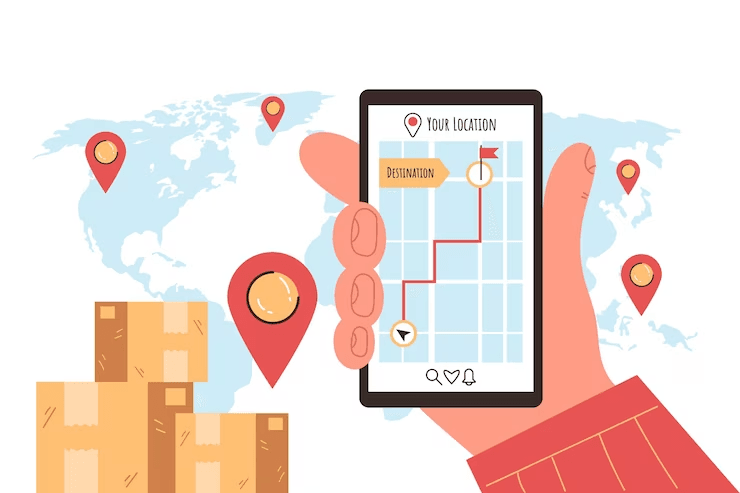
Different ways to provide order tracking information to customers
In the state-of-the-art technology environment, there are several ways to provide tracking information to customers swiftly. Here are:
Email: Send an email to the customer with the tracking number and a link to the carrier's website.
SMS: Send a text message to the customer with the tracking number and a link to the carrier's website. This can be a convenient option for customers as this way does not require an internet connection so they can receive it whenever.
Online account: Customers can monitor the progress of their order and tracking details by logging in to their online account on your website or app. This consolidates all order-related data for them.
Automated notifications: Set up automated notifications for when the order status changes.
Chatbots: Chatbots can be used to deliver real-time information on the status of an order. Customers can use the chatbot to acquire information about their order status, projected delivery date, and any other relevant details.
Phone support: The customer can track order status and information updates by speaking with a salesperson via phone.
Businesses can ensure that clients have access to the information they need to track their orders in real-time by providing order tracking information via these several means. This can increase client satisfaction and reduce order status queries, eventually leading to a more profitable firm.
Offering Multiple Shipping Options
Customers tend to choose from the shipping options list when buying. They will have a bad experience if they have to select the only shipping option that retail stores offer. Among the multiple shipping options offered by retailers, customers will consider which is most suitable based on its convenience, flexibility, and price.
Different shipping options to offer customers
A list of several delivery options that retailers might use in their operations, such as:
Standard shipping: This is the most basic shipping option and usually the cheapest. Delivery times vary depending on the destination but typically take anywhere from 3 to 7 business days from receiving the order.
Expedited shipping: This option is faster than standard shipping and usually takes 2 to 3 business days. This option may be higher-cost than standard shipping, yet it offers faster delivery times.
Next-day or overnight shipping: This option guarantees delivery by the next business day. Despite the most expensive shipping option, it offers the fastest delivery times.
Same-day shipping: This option is getting more popular, particularly for businesses that sell products locally. Customers can receive their orders on the same day they place them, provided they order them within a time frame.
International shipping: This option allows businesses to ship products to customers in other countries. International shipping can be more complex and expensive than domestic shipping, but it helps organizations expand their customer base beyond their domestic market.
In-store pickup: This option allows customers to order online and then pick up their order in person, which can be a convenient option for customers who want to avoid shipping costs or who need their order quickly
By granting these different shipping options, businesses can provide a more flexible and convenient experience for buyers. They need to understand their customers' needs and preferences when selecting which shipping options to offer, as different customers have distinct priorities when discussing shipping.
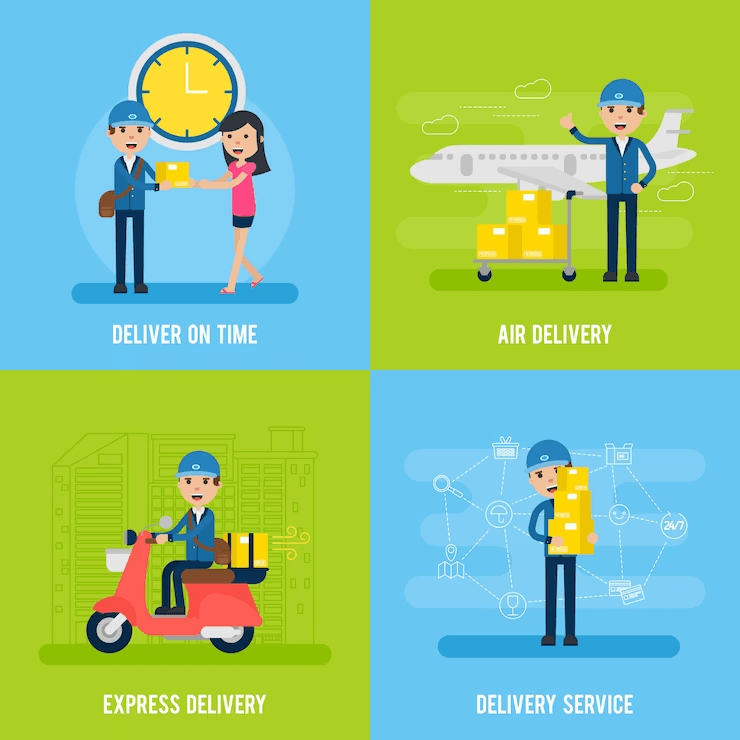
How offering multiple shipping options benefits both customers and businesses
If businesses succeed in offering varied shipping options, this will bring exceptional benefits not only for clients but also for businesses.
For clients
They are flexible and feel empowered to choose the best option based on speed, cost, or other considerations. Furthermore, offering several shipping options allows customers to have their items delivered in a way that fits their schedules and preferences. This can result in a more positive experience and greater consumer satisfaction.
For businesses
Cost savings: Firms can reduce their shipping expenses. They can give cheaper delivery choices to clients who are ready to wait longer, while providing more expensive selections to customers who desire their items quicker. This enables companies to manage their delivery costs effectively.
Competitive advantage: Businesses can differentiate themselves and gain more clients by providing more delivery options than their competitors, resulting in increased sales and a stronger market position.
Customer loyalty: Firms can improve the overall customer experience. As a result, consumer loyalty and repeat business may increase.
Income growth: Firms can generate more income from clients willing to pay more for faster shipping, which can help offset the cost of providing lower-cost shipping options.
Providing a variety of delivery alternatives benefits both customers and businesses. Customers benefit from increased flexibility, convenience, and choice, while businesses benefit from cost savings, a competitive advantage, improved customer loyalty, and revenue growth.
Personalized Packaging and Branding of Orders
We can understand personalized packaging and order branding as creating a product's package with a brand's logo, colors, and other distinctive characteristics to provide a memorable unwrapping experience for customers.
The impact of personalized packaging on customer experience
Businesses that pay more attention to personalizing packaging can improve customer experiences because it impacts brand identity, customer impressions, and other factors.
Some impacts of personalized packaging and branding on a business can be:
Develop brand identity: When customers receive an order with a distinct and memorable packaging design, they are more impressed with the brand. This can help to increase brand awareness and grow the business's customer base.
Improved customer experience: Customers feel valued and appreciated when they receive a personalized order, which can lead to positive reviews and referrals, which can increase customer satisfaction and loyalty.
Differentiation from competitors: When a brand has a unique and recognizable packaging design, it can be outstanding and attract more customers.
Cost-effective marketing: When customers share their unboxing experiences on social media, it can generate positive feedback and increase brand awareness. This can help to attract new customers and grow the business without spending a lot of money on traditional marketing channels.
Increased perceived value: When a consumer receives an order with high-quality packing, it indicates that the brand is committed to providing a high-quality product and experience. This can assist in justifying a higher price point and increasing client loyalty.
Different ways to personalize the packaging and branding of orders
Given the importance of making products outstanding and impressive to customers, retail businesses can utilize the following methods to personalize the packaging and branding of orders:
Customized boxes or envelopes: Use the brand’s logo and colors to create a distinct and recognized package design, which might help to enhance brand recognition and distinguish the brand from competitors.
Custom tissue paper: The perfect combination of customized tissue paper and the brand's logo or message is essential to the unboxing experience.
Stickers or labels: Use stickers or labels with the brand's logo or message to personalize the packaging and branding of orders.
Branded packaging tape: To seal your products, use branded packaging tape with a logo or message, which helps to strengthen the brand's identity and make it appear more professional.
Personalized thank-you cards: Include a personalized thank-you card with each order to express your gratitude and establish a more personal connection with your consumers.
Custom inserts: Add value to the customer experience and improve customer loyalty by using custom inserts with the brand's message or promotions.
Customized packaging materials: To reinforce the brand's messaging and values, use customized packaging materials such as bubble wrap, packing peanuts, or eco-friendly packaging materials.
Above are some recommendations for personalizing the packaging and branding of orders that retail businesses can apply in their operation to make products more and more distinctive, improve customer experiences, and then expand their customer market.
Provide Free or Discounted Shipping for Loyal Customers
Customers will be more likely to purchase if they have a discount coupon, especially for the shipping cost. No matter how little or much, they can feel comfortable knowing that their shipping expenses have been cut.
Meanwhile, retailers understand this insight and have begun to give shipping discount vouchers to prospective consumers to enhance customer loyalty and stimulate repeat purchases.
Customer loyalty in e-commerce
Maintaining client loyalty is critical for the success of any firm, not just e-commerce. Businesses can gain much from taking care of them because:
Repeat business: Loyal consumers are more likely to return to a store, which can help to grow revenue and profitability over time.
Loyal customers tend to spend more than new customers over time, which can raise their lifetime value to the business.
Reduce marketing costs: Acquiring new consumers may be expensive, so maintaining existing customers through loyalty programs and other incentives can help you save money on marketing in the long run.
Increased customer satisfaction: Loyal customers’ recommendations about the business’s product to others can boost its reputation, promote positive word-of-mouth, and expand its consumer base.
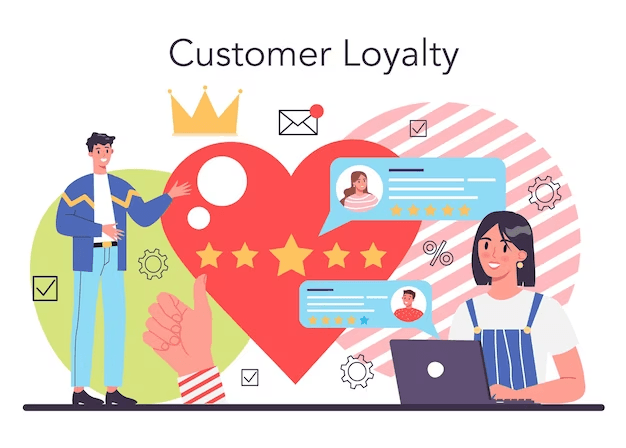
Different ways to reward loyal customers with free or discounted shipping
With the importance of loyal consumers in business success, retailers might employ the following tactics to attract and maintain potential clients effectively:
Loyalty program: Businesses can create a loyalty program that rewards clients with free or discounted shipping based on their purchase history or total spending.
Coupon codes: Companies might provide coupon codes that can be used to get free or discounted shipping on future orders. Clients can send these tickets to their most loyal consumers via email, social media, or website.
Shipment levels: Provide shipment levels based on order value or frequency. Buyers that spend a specific amount, for example, might get free shipping, while others may obtain discounted prices.
Retail firms can create closer ties with their consumers and increase their loyalty to your brand over time by offering a variety of rewards and promotions through loyalty programs.
Easy Returns and Exchanges Processes
Paying attention to the return policy and exchange processes is regarded as the final step in the practice of satisfying the customer experience because it is one of the expectations of customers when placing an order on an e-commerce platform.
Importance of easy and hassle-free returns and exchanges for customers
Customers expect that the return and exchange processes will be easy to follow and won't waste too much time processing and receiving the results.
By offering easy and hassle-free returns and exchanges, both customers and businesses benefit, such as:
Increased confidence: Customers are more likely to feel confident in purchasing when they know they can simply return or exchange a product if it does not match their expectations.
Improved customer satisfaction: Easy and hassle-free returns and exchanges can boost consumer satisfaction and establish trust in the business. Customers are more likely to return to your store if retailers take responsibility for returned items and provide alternatives.
Competitive advantage: Offering simple and painless returns and exchanges might provide you a competitive advantage over competing retailers. It means they will return to your business rather than other firms.
Positive word-of-mouth: Customers can recommend your brand to others if they had the best experience with your returns and exchanges process.
Businesses can foster stronger connections with their consumers, boost customer loyalty, and generate long-term success by concentrating on optimizing the returns and exchanges process.
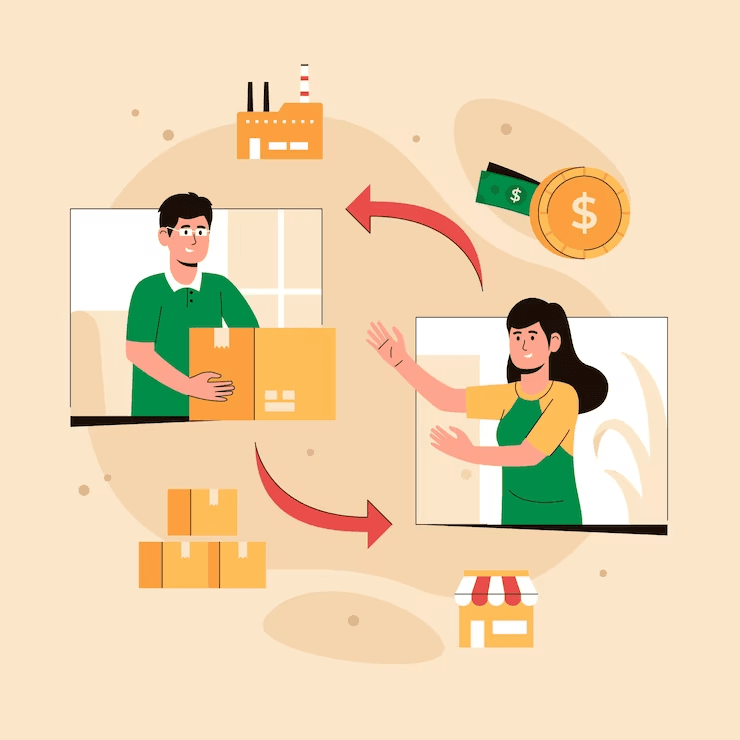
Different ways to make the returns and exchanges process easy for customers
Retail organizations should systemize the return and exchange procedure in the following ways to simplify it:
Clear and straightforward policies: Provide clear and concise instructions on how to return or exchange, including the timeframe for returns and any conditions or requirements.
Multiple return options: Offer multiple return options such as in-store returns, online returns, or by mail, which gives customers the flexibility to choose the option that is most convenient for them.
Prepaid return labels: Provide prepaid return labels with every order, so customers don't have to worry about paying for return shipping
Fast and efficient processing: Streamline the returns and exchanges process to ensure customers receive their refunds or replacements as quickly as possible.
No-hassle returns: Consider implementing a no-questions-asked return policy, which can give customers added peace of mind and encourage them to buy.
Customer service: Provide attentive customer care to assist customers with refunds or exchanges, which develops customer loyalty.
Conclusion
Order fulfillment is a critical component of the e-commerce customer experience. This article has discussed the approaches to making order fulfillment more productive in retail business operations. E-commerce enterprises may compete in a crowded marketplace and achieve a reputation in the years ahead by prioritizing quick fulfillment and consistently seeking to improve the customer experience, trust, and loyalty.
Content
Get our blog
Want the latest and greatest from our blog straight to your inbox? Chunk us your details and get a sweet weekly email.
Read more in our blog

Project Management
The Impact of Dynamic Pricing on Customer BehaviorExplore the impact of dynamic pricing on customer behavior and learn how to implement effective pricing strategies.

Project Management
Focus in Scrum: Keeping Your Team on TrackDiscover effective strategies to maintain focus within your Scrum team, overcome common challenges, and boost productivity.

Project Management
Key Metrics for Mobile App SuccessDiscover the essential metrics for mobile app success, from user acquisition and engagement to monetization and performance.
MLTECH SOFT